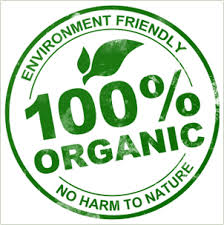organic farming and modern techniques of crop improvement
Saturday, 9 April 2016
MODERN METHODS OF CROP IMPROVEMENT (PLANT BREEDING) :
Plant breeding is the art and science of changing the traits of plants in order to produce desired characteristics. Plant breeding can be accomplished through many different techniques ranging from simply selecting plants with desirable characteristics for propagation, to more complex molecular techniques.
International development agencies believe that breeding new crops is important for ensuring food security by developing new varieties that are higher-yielding, disease resistant, drought-resistant or regionally adapted to different environments and growing conditions.
One major technique of plant breeding is selection, the process of selectively propagating plants with desirable characteristics and eliminating or "culling" those with less desirable characteristics.[3]
Another technique is the deliberate interbreeding (crossing) of closely or distantly related individuals to produce new crop varieties or lines with desirable properties. Plants are crossbred to introduce traits/genes from one variety or line into a new genetic background. For example, a mildew-resistant pea may be crossed with a high-yielding but susceptible pea, the goal of the cross being to introduce mildew resistance without losing the high-yield characteristics.
Traits that breeders have tried to incorporate into crop plants include:
- Improved quality, such as increased nutrition,
improved flavor, or greater beauty
- Increased yield
of the crop
- Increased tolerance of environmental pressures (salinity,
extreme temperature, drought)
- Resistance to viruses, fungi and bacteria
- Increased tolerance to insect pests
- Increased tolerance of herbicides
- Longer storage period for the harvested crop
Friday, 8 April 2016
The key characteristics of organic farming include:
- Protecting the long term
fertility of soils by maintaining organic matter levels, encouraging soil
biological activity, and careful mechanical intervention
- Providing crop nutrients
indirectly using relatively insoluble nutrient sources which are made
available to the plant by the action of soil micro-organisms
- Nitrogen self-sufficiency
through the use of legumes and biological nitrogen fixation, as well as effective
recycling of organic materials including crop residues and livestock
manures
- Weed, disease and pest
control relying primarily on crop rotations, natural predators, diversity,
organic manuring, resistant varieties and limited (preferably minimal) thermal,
biological and chemical intervention
- The extensive management of
livestock, paying full regard to their evolutionary adaptations,
behavioural needs and animal welfare issues with respect to nutrition,
housing, health, breeding and rearing
- Careful attention to the impact of the farming system on the wider environment and the conservation of wildlife and natural habitats
- ADVANTAGES:
Better taste and
more nutrition.
Costs are lowered
The environment
doesn’t sufferPoison-free
Food Keeps Longer
Disease and Pest Resistance
Weed Competitiveness
Lower Input Costs
Drought Resistance
Added Value
DISADVANTAGES:
It’s a whole lot
more work
The consumer pays the
priceCross Breeding Happens
Productivity is less
Cultivation is hard
Takes a lot of time
It requires considerably more skill.
ORGANIC FARMING:
Organic farming is a form of agriculture that developed from a desire to improve soil quality and the environment, and from a concern about the use of synthetic chemicals and fertilizers in agriculture. It relies on naturally-sourced fertilizers such as compost, manure, green manure, and bone meal and places emphasis on techniques such as crop rotation, companion planting.
Organic agricultural methods are internationally regulated and legally enforced by many nations, based in large part on the standards set by the International Federation of Organic Agriculture Movements (IFOAM), an international umbrella organization for organic farming organizations established in 1972.
Organic farming methods combine scientific knowledge of
ecology and modern technology with traditional farming
practices based on naturally occurring biological processes. Organic farming
methods are studied in the field of agroecology. While conventional agriculture uses synthetic
pesticides and water-soluble synthetically purified fertilizers, organic
farmers are restricted by regulations to using natural pesticides and
fertilizers. An example of a natural pesticide is pyrethrin, which is found naturally in the Chrysanthemum
flower.
The principal
methods of organic farming include crop rotation, green manures and compost, biological pest control,
and mechanical cultivation. These measures use the natural environment to
enhance agricultural productivity: legumes are planted to fix nitrogen into the soil, natural insect predators are encouraged, crops are rotated to
confuse pests and renew soil, and natural materials such as potassium bicarbonate and mulches are used to control disease and weeds.
Hardier plants are generated through plant breeding rather than genetic engineering.
Subscribe to:
Comments (Atom)

